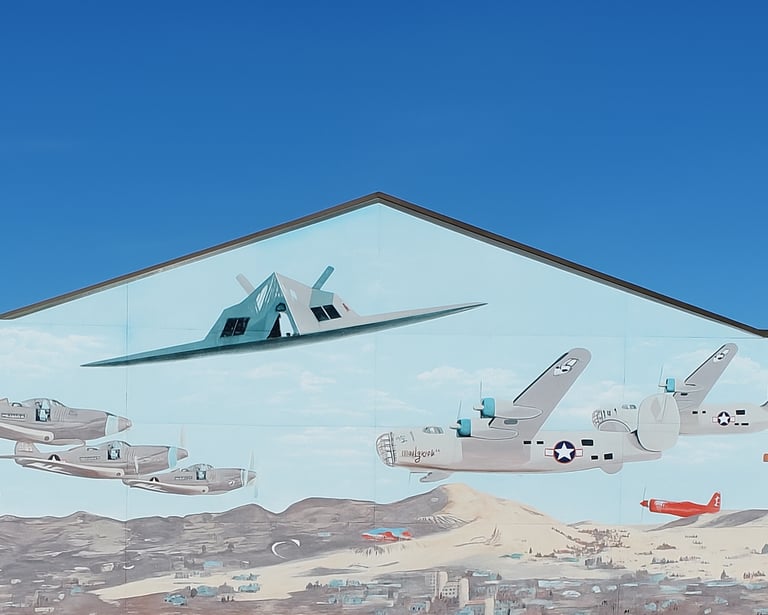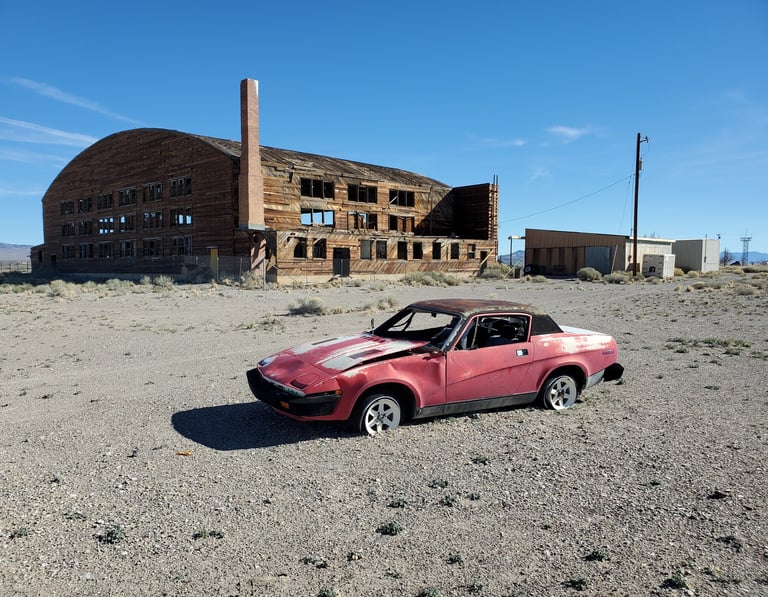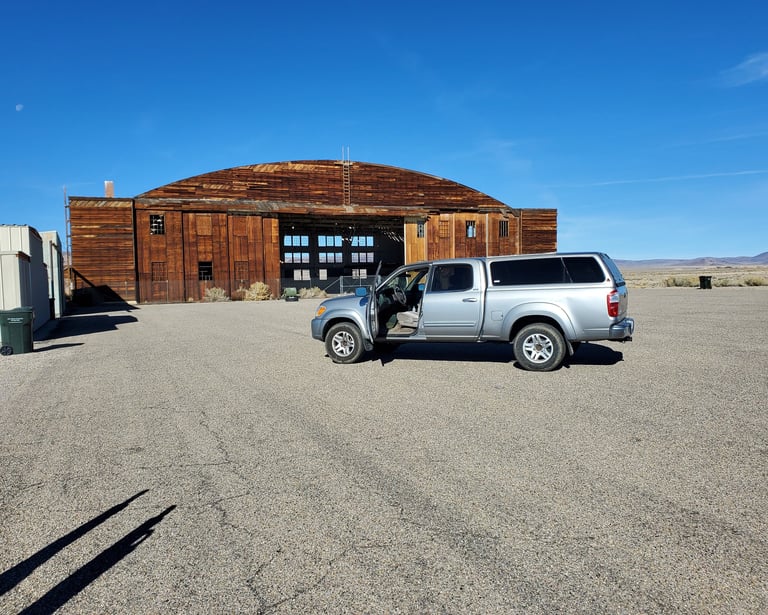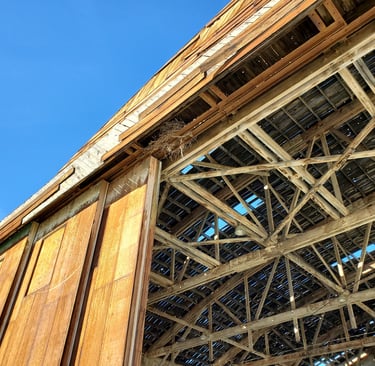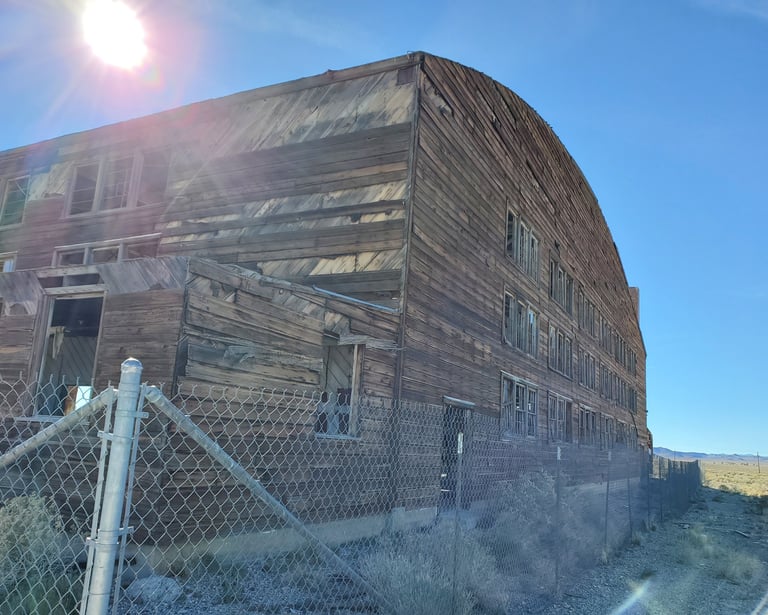What's Stopping You? Change Your Life!
Runways In The Sand
Following Details and Asking Questions
WILLIAM
11/13/20254 min read
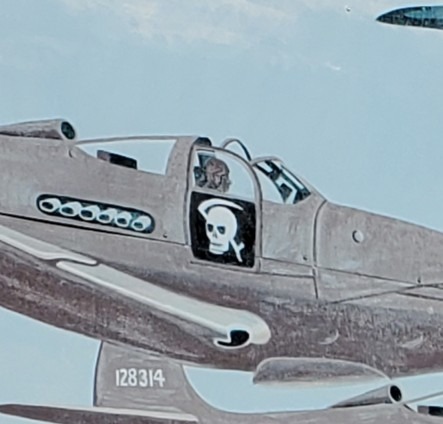

Yesterday I wrote about Tonopah, Nevada — and the quiet pride it holds for its veterans, both those born here and those who arrived from far away. The memorials, murals, and statues carry no political edge, only the calm conviction of people who believed in duty.
As a wanderer, I find that kind of faith moving. When exploring history, it helps to stand as an observer rather than a commentator. People open up when they sense you’ve come to listen instead of to speak. Tonopah feels that way — the town isn’t judging, just remembering.
I love Tonopah. The air is dry, the kind that holds light differently, and there’s almost always a gentle breeze along Main Street. The town is full of stories, and its people are generous with them. The museums here aren’t the polished kind — they’re collections of endurance, fragments from a place that once struck silver, trained bombers, and watched the stars. Each object feels like a remnant of a story still unfolding, as if the town’s past hasn’t quite let go.
Above Main Street, the Tonopah Historic Mining Park overlooks the town like a quiet guardian, keeping watch over the days when silver built the hills.
At the Tonopah Station Hotel and Casino, history seeps into the walls. Old mining helmets, tools, and yellowed photographs line the halls like accidental exhibits, each one whispering something of the past.
A few blocks north, the Clown Motel keeps another kind of archive — a surreal collection of porcelain faces, each smiling or frowning beneath the hum of fluorescent light. Next door, the Old Tonopah Cemetery tells the town’s earliest story: miners who died young, women and children lost to accident or illness, their headstones carved by hand. It’s an uncanny, almost tender juxtaposition — the playful and the solemn sharing the same fence line.
The Central Nevada Museum gathers the larger story — mining and aviation, grit and sky. Its aviation section is small but quietly powerful: a handful of artifacts from the Tonopah Army Air Field, photographs of young airmen in leather jackets, and a yellowed map of the gunnery range stretching out across the desert.
And then there are the murals. My favorite one near Main Street shows a skull-faced figure wielding a scythe — strange, arresting, and obscure enough to feel significant. It’s painted over the image of a P-39 Airacobra, dating back to World War II. Why this particular plane, and why that artwork?
When wandering, I observe, question, and investigate — noticing small details, asking their meaning, and searching for answers. If there’s a small detail, it must mean something to the painter or the viewer. I like to play detective. It’s a teacher thing. Or a nosy thing. Not sure.
I couldn’t find any direct source identifying where the symbol came from, so I took a detour — checking which squadrons had been stationed nearby. Then I researched squadron insignias until I found it: the emblem of the 363rd Fighter Squadron, Chuck Yeager’s squadron. An amazing individual. Go watch The Right Stuff. I’ll wait.
By digging a little deeper, I found that this squadron had flown out of Tonopah Army Air Field — “TAAF” to the men who trained there — a vital link in America’s wartime air network.
The U.S. Army Air Corps chose the site for practical reasons. The desert was empty enough for live bombing, and the endless clear skies offered perfect flying weather. Tonopah was far from cities yet within the rail and highway grid that connected California’s aircraft factories to the rest of the country. In 1940, as the world tilted toward conflict, the War Department took control of three million acres around Tonopah and began carving runways into the desert floor.
By mid-1942, the first bombers were landing — B-24 Liberators whose broad wings cast long shadows over the sage. Within months, the base had grown into a small city: hangars, barracks, hospitals, mess halls, even theaters and baseball diamonds. Six thousand personnel passed through its gates.
In the summer of 1943, Charles E. “Chuck” Yeager was assigned to the 363rd Fighter Squadron, flying the P-39 Airacobra and was stationed here.
When the war ended in 1945, Tonopah’s purpose vanished almost overnight. Training was suspended, the barracks emptied, and the field fell silent except for the whistle of wind through hangar doors.
A few of the original hangars remained, their rusting ribs testifying to the field’s past. We’d actually driven right past them at first — those beautifully aged, barn-like wooden structures just off the road, the last survivors of the old airfield. Drive east from Tonopah and you’ll find the civil Tonopah Airport still active on one of the original runways. Small planes taxi where Airacobras and B-24s once roared. When driving around the ground there are signs warning that aircraft have the right-of-way on the roads. A few wooden hangars survive, their paint sun-bleached to ghostly hues. There are outlines of old streets and barracks pads.
What remains is hauntingly beautiful — the bones of these buildings a testament to the ambition to fight tyranny, and to the quiet endurance of those who trained beneath these skies. What remains is hauntingly beautiful — the bones of these buildings a testament to the ambition to fight tyranny, and to the quiet endurance of those who trained beneath here. A living memorial as it ages and returns to the desert. Check it out on Hwy 6. But don't drive at night. That’s another story
If You Go
Location: Tonopah Airport (TPH), about seven miles east of downtown Tonopah, Nevada.
Access: Public general-aviation airport; remain within marked areas. Old hangars and WWII ruins visible nearby.
Best time: Spring and fall for cooler weather; morning or dusk for photography.
